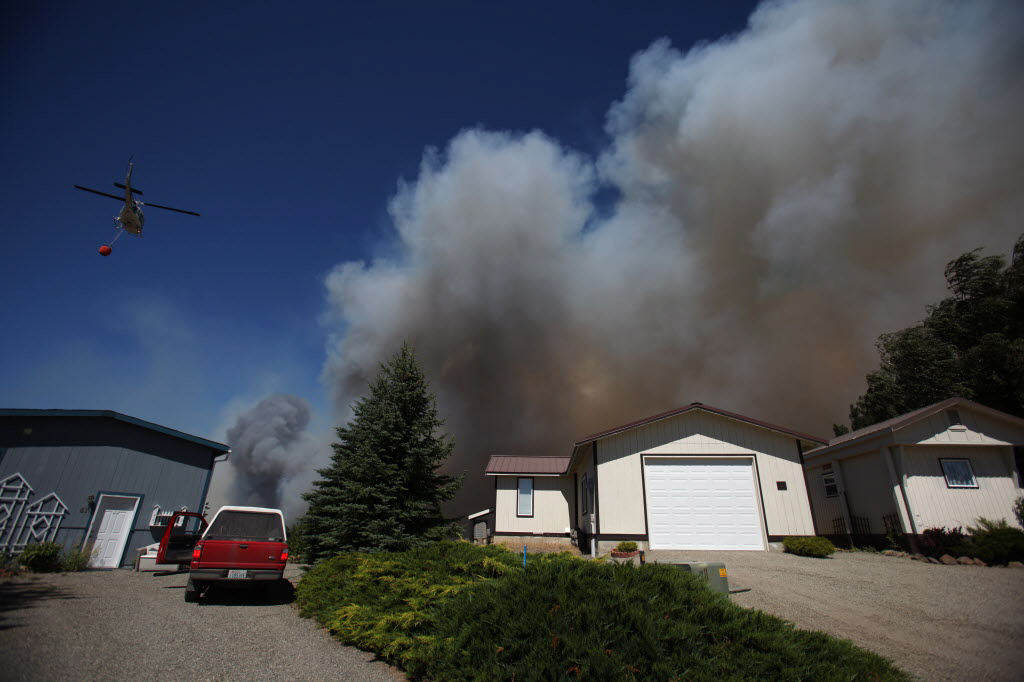YAKIMA — The reddish-orange stain on the boulders lining their long rural driveway reminds Susan and Al Maza just how close they came to losing their home to wildfire.
The stain is from fire retardant dropped by air tankers during 2010’s Cowiche Mill Fire, which scorched much of the Mazas’ 40-acre spread and roared to within 20 feet of their West Valley house. That the home still stands is a testament to the fire crews whose efforts Susan Maza describes as “like watching a choreography of a ballet … everything according to plan.”
That firefighters were able to execute that plan, though, is also a testament to the Mazas.
Because they built so far out in the country, the Mazas took seriously their responsibility to make their home as fire-safe as possible. They wrapped their driveway around the house so emergency vehicles could get through, and maintained a tree-and-fuels-free buffer which allowed firefighters to halt the fire’s progress.
Not all residents of what land managers and fire experts call the “wildland-urban interface,” though, will be so fortunate. The Mazas have close friends who own a stately cabin in the forested hills near Cliffdell.
“I just hope they’re well-insured,” Susan Maza says. “If they had the winds like we had and they had a fire, it would just blow right through there. They wouldn’t be able to save it.”
Fire crews would almost certainly try. And they would probably spend many times the cabin’s value to defend it, while tying up firefighting resources that might be put to better use elsewhere.
In an era of increasingly large wildfires, the wildland-urban interface — where the forest meets development — has become the front line of a financial battlefield.
“Politically, no one wants to hear it — but the reality is there are places we should not be putting people,” says Jakki McLean, Yakima County’s fire marshal. “You own property and you want to build on it … but for your own protection, maybe you shouldn’t be building there.”
Yet people continue to do so. Some 45 million homes are already in fire-prone forests across the country, a number federal officials expect to rise another 40 percent by the year 2030.
Washington state has more wildland-urban interface than most states.
A 2009 study found the state has nearly 200,000 residences in its wildland-urban interface — defined by the study’s author, Montana-based Headwaters Economics, as private forestlands within 500 meters of public forestlands. Washington’s level of development in wildland-urban areas, according to the study, is the second-highest (21 percent) among the 11 Western states.
“Defending homes in the wildland-urban interface is by far the priciest part of fighting large wildfires, accounting for 50 percent to 95 percent of total suppression costs, according to a 2006 federal audit. The mere presence of those homes also drives wildland firefighting policy, turning many a naturally-caused fire that might otherwise be allowed to run its course — often to the long-term benefit of the forest — into one that must be suppressed to protect the houses.”



